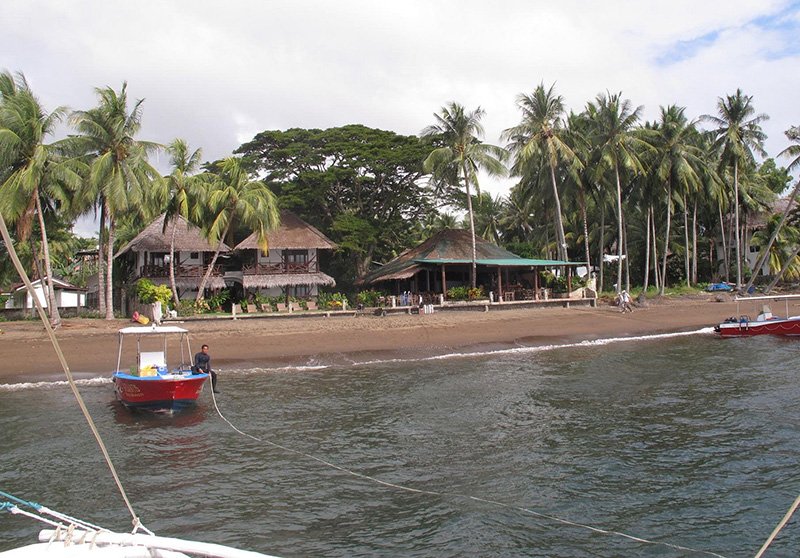|
 The Philippines
The Philippines
Since Spanish colonial times, the Philippines has been Asia's largest Catholic country with 76% of the population currently identifying as Roman Catholic.
It is, however, also home to over a hundred ethnic groups, a mixture of foreign influences, and a fusion of culture and arts which enhance the uniqueness
of the Filipino identity.
Needless to say, the characteristic Filipino traits are a confluence of many cultures put together. Filipinos are famous for the Bayanihan or spirit of
kinship and camaraderie took from Austronesian forefathers. They observe very close family ties which are said to have been passed on by the Chinese.
Religion comes from the Spaniards who were responsible for spreading the Christian faith across the archipelago. The genuine and pure expression of
hospitality is an inherent trait in Filipinos, especially those that reside within the countryside who may appear very shy initially, but have a generous
spirit, as seen in their smiles.
Diving Highlights
The scuba diving sites of Dauin have a number of great macro subjects, including pipefish, mandarin fish, juvenile batfish, seahorses, mantis shrimp,
ribbon eels, dragonets, hairy squat lobster, snake eels, wonderpus octopus, bobtail squid, a large number of nudibranchs, blue-ring octopus, harlequin
shrimp, and flamboyant cuttlefish. Nearby Apo Island has turtles, sea snakes, a school of jacks, groups, clownfish, and lots of reef fish.
Water Temperature: Water temp is generally 27.5C/81F but in January and February this can drop to around 25C/77F. We recommend diving in a 3mm full wetsuit
with booties. Many divers choose to wear light gloves and occasionally a hood after several days of repetitive diving. Be sure to bring a light rain jacket,
and ample sun protection.
Visibility: Typically 30 - 40ft at Dauin, 60 - 80ft at Apo Island
Weather
The climate of the Philippines is tropical, with March to May being both the hottest summer months and the busiest. The Easter holy week usually also
falls within this time and is considered to be part of the super peak season for most beach resorts which tend to get overcrowded at this time. The
best time to visit for both cooler and drier weather is from mid-January to the end of February. Average temperatures range from 25°C to 32°C and the
humidity is around 77%.
The rainy season starts in June and extends through to October with high possibilities of strong typhoons which can not only negatively influence travel
plans but also frequently cause great destruction and loss of life. Locations exposed directly to the Pacific Ocean have frequent rainfall all year round.
The coolest months are from November to February and are also a great time to visit.
Time
Philippine Time (PHT - UTC+8)
Philippine Time is 16 hours ahead of the time in Grass Valley when Grass Valley is on standard time, and 15 hours ahead of the time in Grass Valley when
Grass Valley is on daylight saving time.
Philippine Time has not had daylight saving time since 1978.
Water Quality
Tap water in the Philippines isn't considered safe to drink. The area around Manila officially has safe tap water but only a small percentage of locals drink it
without boiling or filtering it. To stay safe, you should avoid drinking tap water unless it's been filtered or boiled first!
|
Adventure and Sightseeing
The country offers opportunities for caving, whitewater rafting, surfing and sailing, depending on the island you are visiting.
Safety
Most parts of the Philippines are very safe to travel to, however, the whole of the far south is a no-go zone: The areas of Mindanao, the Sulu Archipelago,
and the Zamboanga Peninsula are all considered extremely dangerous due to terrorist activity. Petty crime such as pick-pocketing and bag snatching is a
common issue, especially in public crowded places like bus and train stations and the bigger cities, so keep your belongings close. In some areas where the
party scene is big, drink spiking (known as the Ativan scam) is a common problem. Also, be wary of police officers who may attempt bribery scams. The
Philippines is at high risk from cyclones, earthquakes, floods, landslides, tsunamis, volcanic eruptions, and wildfires. Keep a keen watch for any warnings
particularly if you are there during the typhoon season, or better yet, try to avoid it!
Drugs
Marijuana, shabu (crystal methamphetamine), and all other drugs are very much illegal. Penalties for drugs are VERY harsh, and resisting the police may result
in death.
Passport Requirements
Traveling to the Philippines is easy; the Philippines grants 30-day visa-free entry to passport holders of certain countries while requiring a visa application
for others. Most visitors who qualify for visa-free entry can also apply for an extension of the visa waiver of an additional 29 days after arrival. We found
this a simple, same-day process in Puerto Princesa but you should avoid the Manila office if possible. Be sure to check online for the latest visa requirements,
allow enough time for processing of your visa and note that you may need to hold a valid ticket for either a return journey to your country of origin or your
next country of destination. Also, make sure your passport is valid for at least 6 months after your entry. The latest entry requirements are available
here.
Electricity, Telephone and Internet Access
220V AC electricity. Power outlets are both flat and small round two-prong sockets (type A and type C) as well as flat three-pronged (type B). Downtown Baguio
(northern Luzon) uses 110 V, so ask first if you are in this area! Be sure to carry a universal travel adaptor, so you can still use all your electronic devices.
If you are from a country with 110V as a standard be aware that you will need a voltage converter.
Language
Filipino & English are the official languages.
Currency
The local currency is the Philippine Peso. In some tourist areas you might be able to pay for goods and services using
U.S. dollars and euros. However convenient this may appear to be, unfortunately the exchange rates that are applied are unlikely to be great.
Location and Size
The Philippines is an archipelago in South-East Asia, at the very eastern edge of Asia, and consists of more than 7000 islands located between the Philippine
Sea and the South China Sea. It would take about 20 years to spend a day on every island! The wonderful beaches form part of one of the world's longest
coastlines.
|





 The Philippines
The Philippines